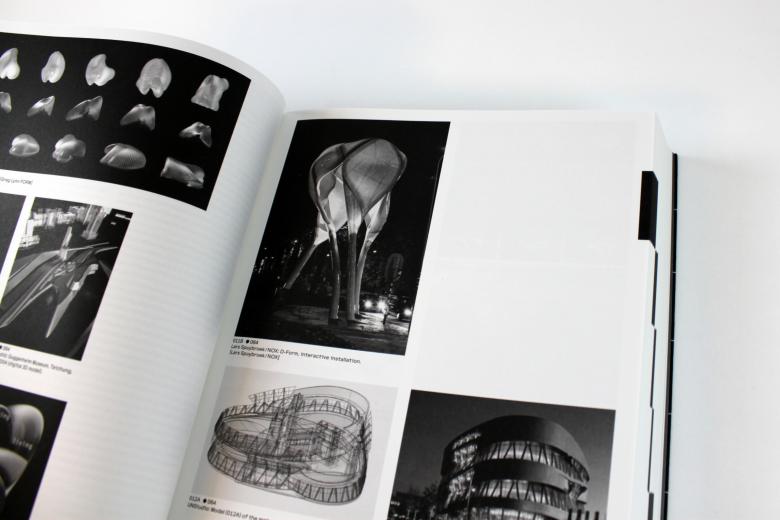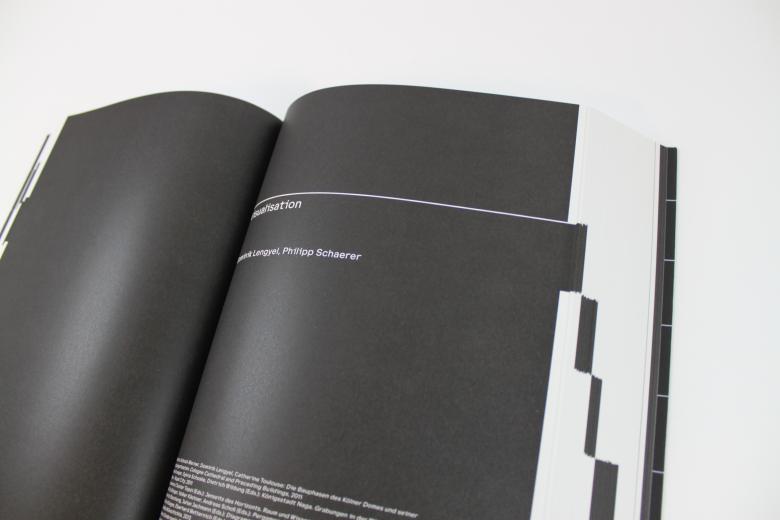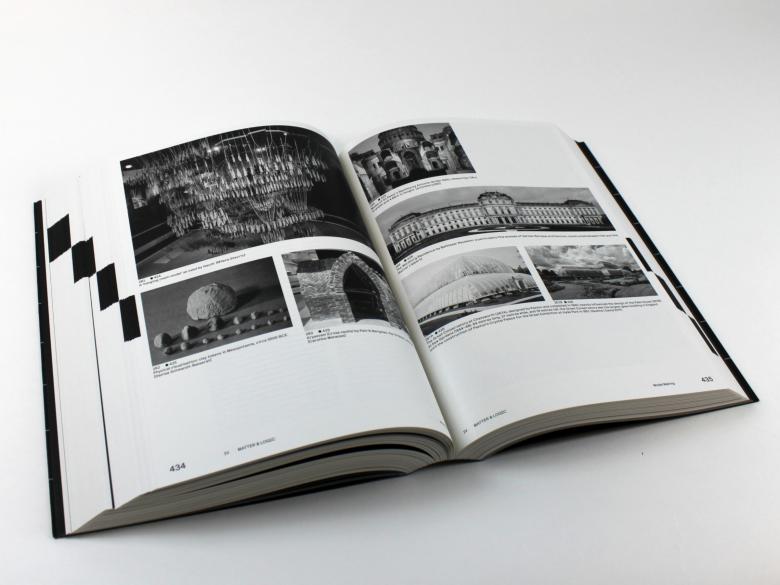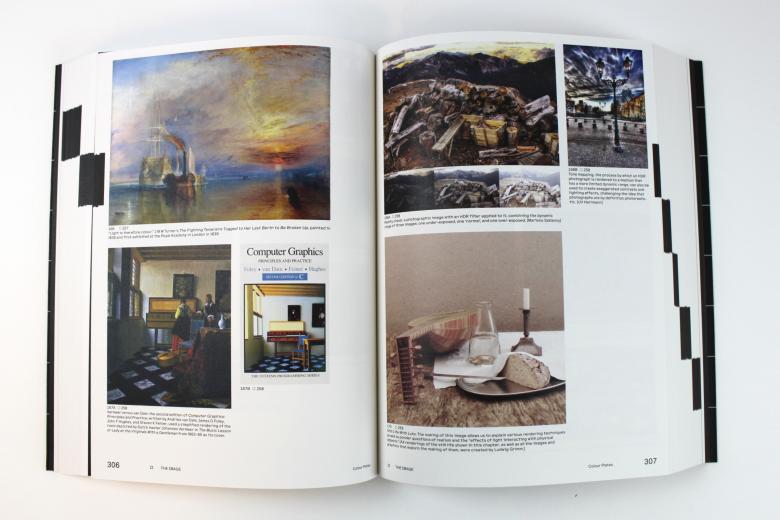A Monumental Undertaking
John Hill
25. February 2021
Photo courtesy of Birkhäuser
The 760-page Atlas of Digital Architecture is an ambitious reference book about the myriad ways architects use computers. With contributions by two-dozen experts in the digitization of architecture and hundreds upon hundreds of illustrations, the book is a nearly complete picture of the digital world architects occupy.
It goes without saying, but computers are all-pervasive. This writer, a non-practicing architect, is typing this review on a computer, for an article that will be posted on a website and distributed to many people via an email newsletter. Yes, the subject of this piece, Atlas of Digital Architecture: Terminology, Concepts, Methods, Tools, Examples, Phenomena, is a physical book — a hefty one, at 2.5 inches (6.35 cm) thick and weighing over 6 lbs (2.7 kg). But it is a book that was produced using computers every step of the way, from the two-dozen authors' contributions and their video conversations with writer Sebastian Michael (more on that later), to the layout and book design by Onlab, the color separations for the 750 illustrations, and the printing of the books themselves. Logically the same applies to architects, who use software to design, document, and render buildings, but who also use computers to communicate and collaborate, and who increasingly embrace digital tools for fabrication and other areas outside of design. Atlas of Digital Architecture documents every aspect of architectural practice that involves computers — in other words, all of architectural practice.
Photo courtesy of Birkhäuser
Collaboration is a key term when considering Atlas of Digital Architecture. The book was edited by Ludger Hovestadt, Urs Hirschberg, and Oliver Fritz, three members of the Working Group on Architecture and Information Technology AK:AI (Arbeitskreises Architekturinformatik). Fritz and Hirschberg, with Sven Pfeiffer, write in their "Collaboration" chapter about how the Atlas is the product of numerous European members of AK:AI who have collaborated for many years, but whose efforts really clicked with the internet and digital communication tools. Those same tools enabled the book's two-dozen contributions and its unexpected, innovative format: each author surrendered control of their content to the group, as described in the chapter, and allowed "a non-subject-expert to actually write the book." To make the book, writer Sebastian Michael interviewed the authors about their chapters after reading their abstracts, wrote the entirety of their chapters, and then went back and forth with the AK:AI authors to finalize the texts. This collaborative process results in a book that — even though few people would ever tackle it from cover to cover — has a consistent voice and tone throughout. Given that much of the content is highly technical, the overarching participation of a non-subject-expert makes the whole highly accessible.
Photo courtesy of Birkhäuser
If few people will read the Atlas from cover to cover, how will they dive into and navigate its content? The 25 chapters are organized into six sections, each one addressing a part of architectural practice or digital realms:
- THE DESIGN: Creating the Geometries of Architectural Artifacts
- THE IMAGE: Visualizing Architecture
- LANGUAGE: The Abstraction of Architecture
- MATTER & LOGIC: The Physical Representation of Architecture
- LOGISTICS: The Dynamic Representation of Architecture
- COEXISTENCE: The Interfaces and Modes of Collaboration Between Information Technology and Architects
The interests of an architect or, more likely, a student of architecture will dictate where they dive into the book. Interested in scripting and code? Go to section three. Taking a class on rendering or visualization? Head to section two. Curious about virtual reality, BIM, and big data? Section five is for you. With chapters ranging in length from around 15 pages up to 30 pages, and with each one eking out a particular topic distinct from the others (with a little overlap to be expected), digesting each chapter individually as one's needs and desires dictate is one recommended approach to the Atlas.
Onlab's layout of the book balances the chapters as standalone entities with references throughout the texts that invite further ways of navigating the book, much like the internet. Images are thumbnails within the chapters to allow the text to flow, but they reappear at the close of each chapter in larger format, with color plates also found at the end of each section. In this sense, the book design manages to bring some of the flavor of the World Wide Web to the printed page. Vice-versa, QR codes at the start of each chapter drive readers to the Atlas of Digital Architecture website, where videos, links, and referenced publications give architects and students even more relevant information to digest.
Photo courtesy of Birkhäuser
Being intentionally called an atlas rather than an encyclopedia or something else, the Atlas of Digital Architecture is not a comprehensive reference on how to use Rhino, for instance, nor does it have comparisons of different BIM products available. "Atlas" implies situating oneself in the world, and this book situates architects and future architects within the continuum of digital technologies that have shaped, and continue to shape, architectural practice. The contributions make history as important as the present day, showing how technology has advanced and how architects have incorporated computers over time. The synergy of many of these technologies (the internet, video calling, BIM, digital fabrication, etc.) make the Atlas of Digital Architecture a perfect product of our moment — as well as a roadmap of where we're going.

Atlas of Digital Architecture: Terminology, Concepts, Methods, Tools, Examples, Phenomena
Editors: Ludger Hovestadt, Urs Hirschberg, and Oliver Fritz
Writer: Sebastian Michael
29.0 x 21.0 cm
760 Pages
750 Illustrations
Paperback
ISBN 9783035619898
Birkhäuser
Purchase this book



